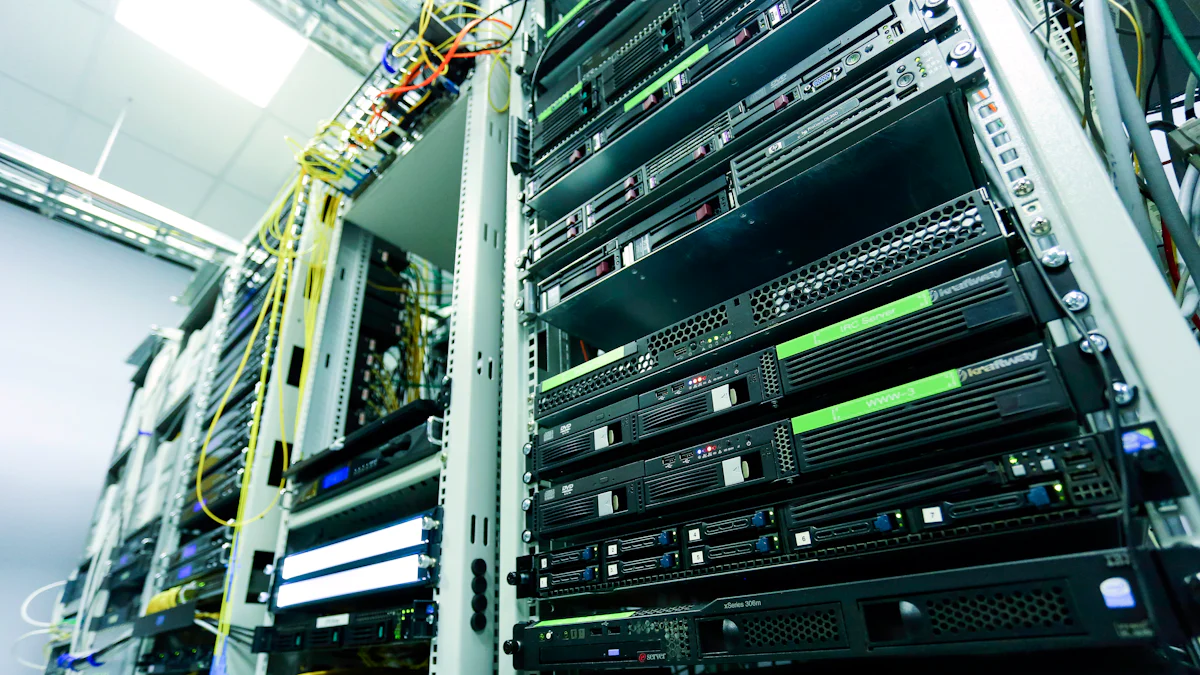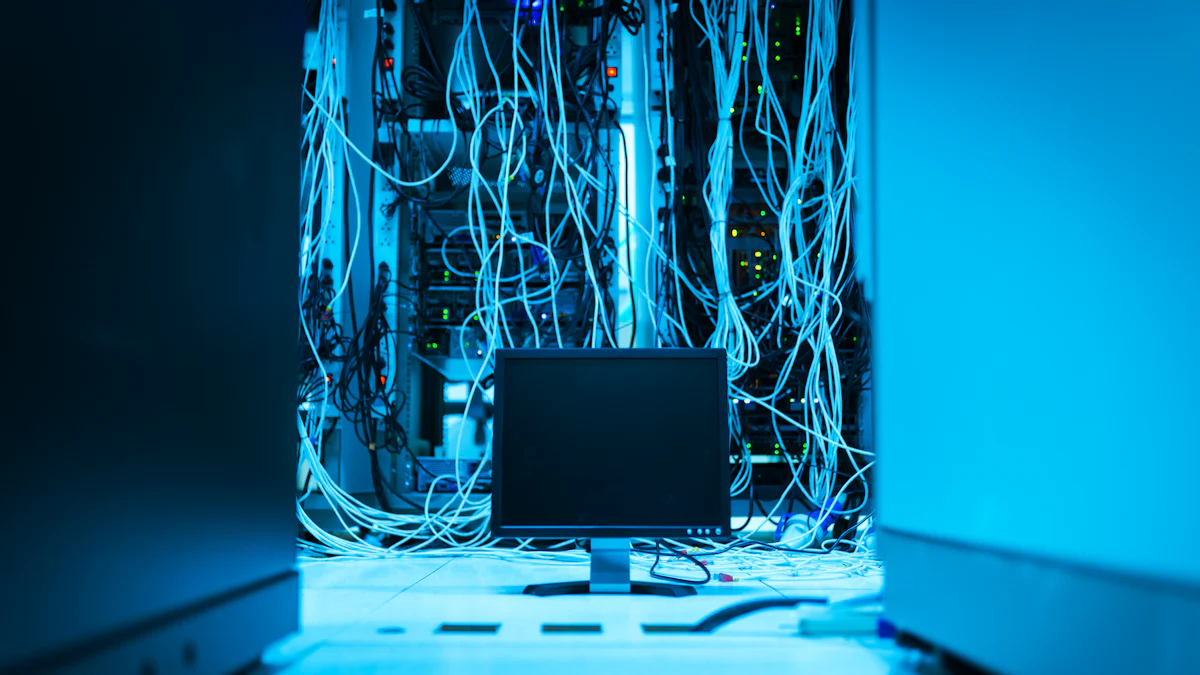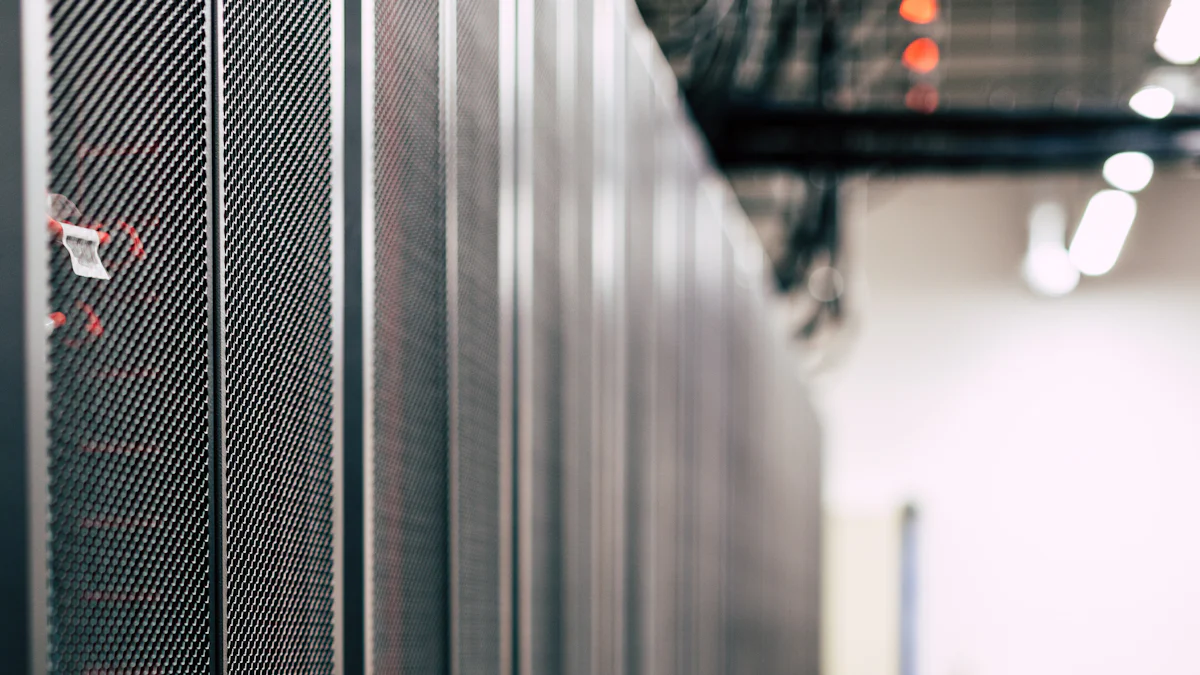
Metered PDUs are advanced power distribution units designed to monitor real-time power usage. These devices play a critical role in ensuring efficient power management at the network layer. By providing precise data on energy consumption, a metered PDU helps optimize resource allocation, reduce energy waste, and maintain operational stability in network environments.
Key Takeaways
- Metered PDUs are of three kinds: inlet, outlet, and inline. Each type helps monitor power differently, letting admins pick the right one.
- Metered PDUs help manage power by giving live data. This helps use resources wisely and avoids power problems.
- Choosing the right metered PDU means checking network needs, planning for growth, and making sure it works with current tools.
Types of Metered PDUs

Metered PDUs come in various types, each designed to meet specific power distribution and monitoring needs. Understanding these types helps network administrators select the most suitable option for their infrastructure.
Inlet Metered PDUs
Inlet metered PDUs monitor the total power consumption at the input level. These devices provide real-time data on the power drawn from the source, enabling administrators to track overall energy usage. They are ideal for environments where monitoring the total power load is critical for capacity planning and preventing circuit overloads. Inlet metered PDUs are often used in data centers and server racks to ensure efficient power distribution across multiple devices.
Outlet Metered PDUs
Outlet metered PDUs measure power usage at each individual outlet. This granular monitoring allows administrators to identify the energy consumption of specific devices connected to the PDU. By analyzing this data, they can optimize power usage, detect underutilized equipment, and improve energy efficiency. Outlet metered PDUs are particularly useful in environments with diverse equipment, where precise power management is essential.
Inline Metered PDUs
Inline metered PDUs are installed between the power source and the equipment, offering a flexible solution for monitoring power usage without replacing existing infrastructure. These PDUs provide detailed insights into energy consumption and help maintain balanced loads. Inline metered PDUs are often chosen for retrofitting older systems or temporary setups where monitoring capabilities are required.
Selecting the right type of metered PDU ensures efficient power management and supports the operational stability of network systems.
Key Metrics Monitored by Metered PDUs
Voltage Monitoring
Voltage monitoring ensures that devices receive the correct voltage levels for optimal performance. Metered PDUs continuously track voltage fluctuations and provide real-time data to administrators. This information helps identify irregularities, such as voltage drops or spikes, which can damage sensitive equipment. By maintaining stable voltage levels, network systems operate more reliably and efficiently.
Current Monitoring
Current monitoring measures the electrical current flowing through the PDU. This metric helps administrators understand the power demand of connected devices. It also aids in identifying potential overloads that could trip circuits or cause equipment failure. Metered PDUs with current monitoring capabilities allow for proactive load management, ensuring that power distribution remains balanced and safe.
Power Factor and Energy Consumption
Power factor indicates how efficiently electrical power is being used. A low power factor suggests wasted energy, which increases operational costs. Metered PDUs monitor this metric to help administrators optimize energy usage. Additionally, tracking energy consumption provides insights into overall power usage trends. This data supports energy-saving initiatives and helps reduce the environmental impact of network operations.
Load Balancing Metrics
Load balancing metrics ensure that power is evenly distributed across all connected devices. Uneven loads can lead to overheating and equipment failure. Metered PDUs monitor these metrics to prevent such issues. By analyzing load distribution, administrators can redistribute power as needed, improving system stability and extending the lifespan of network equipment.
Monitoring these key metrics with a metered PDU enhances power management and ensures the long-term reliability of network systems.
Benefits of Using Metered PDUs at the Network Layer

Improved Power Management
Metered PDUs provide network administrators with real-time data on power usage. This visibility allows them to allocate resources more effectively and prevent power-related issues. By monitoring energy consumption, administrators can identify inefficiencies and take corrective actions. This proactive approach ensures that power distribution remains stable and supports the smooth operation of network systems.
Enhanced Energy Efficiency
Energy efficiency becomes achievable with the detailed insights provided by metered PDUs. These devices help identify underutilized equipment and unnecessary energy consumption. Administrators can use this information to optimize power usage and reduce waste. This not only lowers operational costs but also contributes to sustainable energy practices, making metered PDUs an essential tool for modern network environments.
Reduced Downtime and Better Load Balancing
Metered PDUs play a critical role in minimizing downtime by ensuring balanced power distribution. Uneven loads can lead to overheating or equipment failure, disrupting network operations. By monitoring load metrics, administrators can redistribute power as needed to maintain system stability. This capability reduces the risk of outages and extends the lifespan of connected devices.
Scalability for Growing Network Demands
As networks expand, the need for scalable power solutions becomes vital. Metered PDUs support scalability by providing flexible monitoring and management capabilities. They adapt to changing power requirements, ensuring that growing infrastructures remain efficient and reliable. This makes them an ideal choice for organizations planning to scale their operations.
Metered PDUs offer a comprehensive solution for managing power at the network layer, ensuring efficiency, reliability, and scalability.
How to Select the Right Metered PDU
Assessing Network Requirements
Selecting the right metered PDU begins with evaluating the specific needs of the network. Administrators should analyze the total power demand, the number of devices requiring connection, and the type of equipment in use. For example, high-density server racks may require PDUs with multiple outlets and advanced monitoring features. Understanding these requirements ensures the chosen PDU aligns with the network’s operational demands.
Considering Scalability and Future Needs
Networks often grow over time, making scalability a critical factor. A metered PDU that supports modular configurations or additional capacity can accommodate future expansion. Administrators should consider the potential for increased power loads or additional devices. Choosing a scalable solution reduces the need for frequent replacements, saving both time and resources.
Evaluating Compatibility with Monitoring Tools
Compatibility with existing monitoring systems is essential for seamless integration. Administrators should verify that the metered PDU supports the network’s preferred software or protocols, such as SNMP or web-based interfaces. This compatibility ensures real-time data collection and simplifies power management. Additionally, PDUs with user-friendly interfaces enhance operational efficiency.
Ensuring Compliance with Industry Standards
Compliance with industry standards guarantees safety and reliability. Administrators should look for certifications such as UL, CE, or RoHS when selecting a metered PDU. These certifications indicate adherence to quality and safety benchmarks. Ensuring compliance minimizes risks and ensures the PDU meets regulatory requirements for the intended environment.
A well-chosen metered PDU enhances power management, supports scalability, and ensures long-term reliability for network systems.
Metered PDUs, including inlet, outlet, and inline types, offer tailored solutions for power monitoring and distribution. Their ability to track key metrics ensures efficient power management at the network layer. Selecting the right metered PDU requires careful analysis of network requirements. By doing so, organizations can enhance energy efficiency and maintain operational stability.
FAQ
What is the primary purpose of a metered PDU?
A metered PDU monitors power usage in real time. It helps optimize energy efficiency, prevent overloads, and ensure stable power distribution across network devices.
Can metered PDUs support future network expansions?
Yes, many metered PDUs offer scalability. They accommodate additional devices and increased power demands, making them suitable for growing network infrastructures.
How do metered PDUs improve energy efficiency?
Metered PDUs provide detailed power consumption data. Administrators use this information to identify inefficiencies, reduce waste, and implement energy-saving strategies.
Post time: Feb-06-2025





